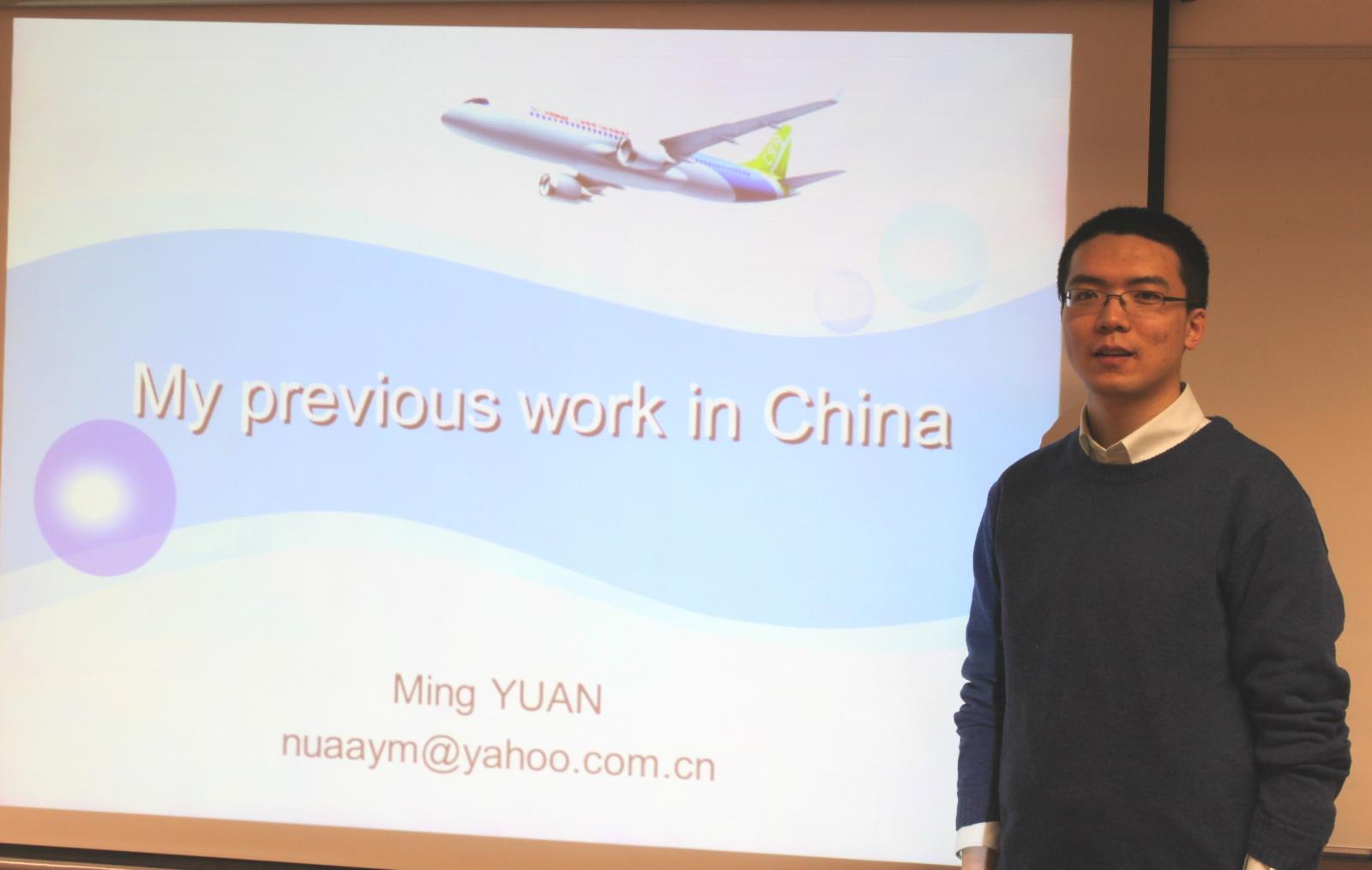Piezoelectric based active noise and vibration control
At LMSSC, Cnam, Paris, January 29th 2013, 10 a.m.
Ming Yuan
Doctorate, Nanjing University of Aeronautics and Astronautics, Nanjing, China

The seminar focus on the active noise and vibration control using piezoelectric smart materials. Since light and flexible structures have been largely used in aircraft and vehicles, structure borne noise is very crucial for passengers' comfort. Since active control is effective at low frequencies, three approaches are adopted to suppress vibration and noise transmission through structures.
The first one is PPF/FXLMS hybrid control on a stiffened panel. Since PPF can add active damping on the secondary path, the FXLMS algorithm's performance can be enhanced. The FXLMS can converge more quickly and the residue errors can be smaller. The second one is decentralized collocated feedback control. Collocated pole-zero spacing's influence to the control performance is analyzed and accelerometer is used as the sensor rather than piezoelectric patch. A Negative Acceleration Feedback control law is derived focused on the first global vibration mode and Direct Velocity Feedback is used for wide band control. The Hilbert-Huang method is used to identify the first mode's natural frequency and this parameter is sent to a FPGA control target each time before it starts to work. The third approach is piezoelectric dynamic vibration absorber. Mechanical-electrical analogy and impedance-mobility method is used to put the mechanical absorber, piezoelectric shunt circuit and active control into a unified electric model.
All above proposed control laws have been done in real-time control experiments and satisfying control results are obtained. The proposed research works to be done in Cnam are:
- Establish analytical FEM coupling models with the help of Patran/Nastran and Matlab;
- Establish the experimental system with dynamic and acoustic analysis;
- Combine with piezoelectric shunt control and active control for noise and vibration reduction.
